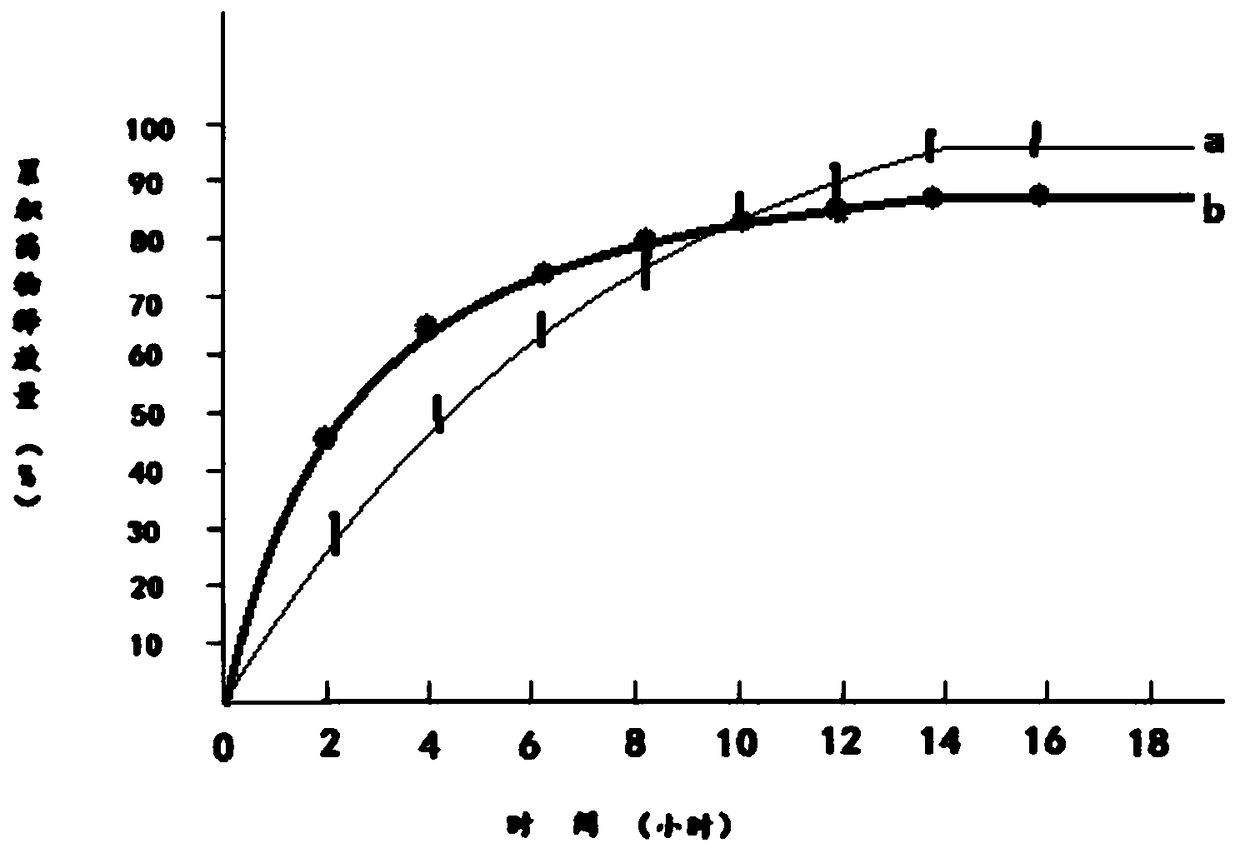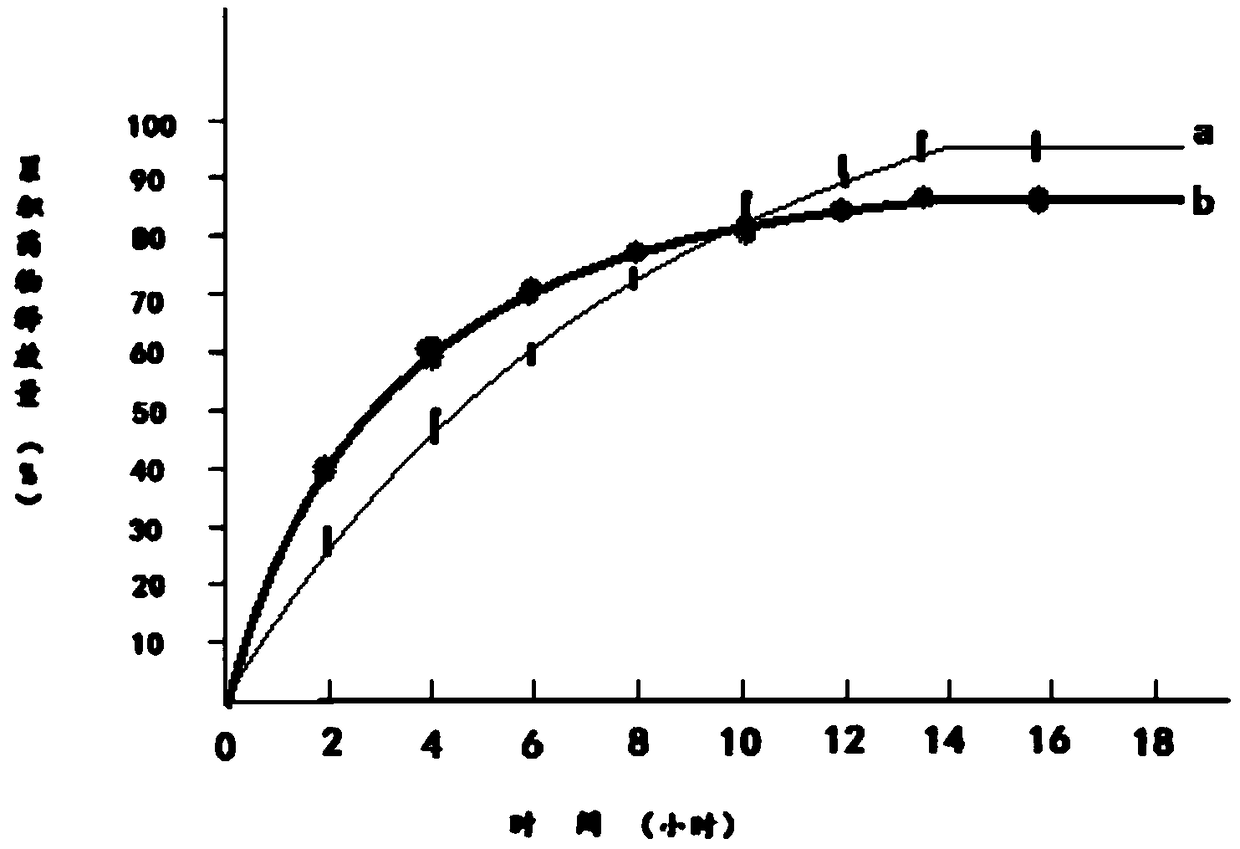Preparation method of tramadol hydrochloride sustained-release preparation
A technology for tramadol hydrochloride and sustained-release preparations, which is applied in pharmaceutical formulations, medical preparations with inactive ingredients, and medical preparations containing active ingredients, etc., can solve problems such as changes in drug release, large amount of excipients, and unfavorable oral administration. , to achieve the effect of moderate amount of capsule material, high production efficiency and good sustained release function.
- Summary
- Abstract
- Description
- Claims
- Application Information
AI Technical Summary
Problems solved by technology
Method used
Image
Examples
Embodiment 1
[0023] 1) 100g tramadol hydrochloride was dissolved in 100g95% ethanol to obtain tramadol hydrochloride ethanol solution, which was designated as solution A;
[0024] 2) Add 120g of hydroxypropyl β-cyclodextrin and 20g of mannitol to solution A to obtain solution B;
[0025] 3) Dissolve 120g of polylactic acid and 20g of polyethylene glycol 200 in 120g of acetone to obtain a solution of polylactic acid and polyethylene glycol 200, which is referred to as solution C;
[0026] 4) Mix solution B and solution C to obtain solution D;
[0027] 5) Transfer solution D to a magnetic stirrer, control the temperature of solution D at 15°C to 18°C, continuously stir solution D for 12 hours, then reduce the temperature of solution D to 0°C to 1°C within 2 hours and let it stand for 12 hours. Hours, keep the temperature of solution D at 0°C to 1°C during the standing period;
[0028] 6) Heat the solution D obtained in step 5, and stir continuously for 12 hours when the temperature of the ...
Embodiment 2
[0032] 1) 100g tramadol hydrochloride was dissolved in 110g95% ethanol to obtain tramadol hydrochloride ethanol solution, which was recorded as solution A;
[0033] 2) Add 140g of hydroxypropyl β-cyclodextrin and 25g of mannitol to solution A to obtain solution B;
[0034] 3) Dissolve 140g of polylactic acid and 30g of polyethylene glycol 200 in 140g of acetone to obtain a solution of polylactic acid and polyethylene glycol 200, which is referred to as solution C;
[0035] 4) Mix solution B and solution C to obtain solution D;
[0036] 5) Transfer solution D to a magnetic stirrer, control the temperature of solution D at 15°C to 18°C, continuously stir solution D for 12 hours, then reduce the temperature of solution D to 0°C to 1°C within 2 hours and let it stand for 12 hours. Hours, keep the temperature of solution D at 0°C to 1°C during the standing period;
[0037] 6) Heat the solution D obtained in step 5, and stir continuously for 12 hours when the temperature of the so...
Embodiment 3
[0041] 1) 100g tramadol hydrochloride was dissolved in 120g95% ethanol to obtain tramadol hydrochloride ethanol solution, which was designated as solution A;
[0042] 2) Add 150g of hydroxypropyl β-cyclodextrin and 30g of mannitol to solution A to obtain solution B;
[0043] 3) Dissolve 150g of polylactic acid and 40g of polyethylene glycol 200 in 150g of acetone to obtain a solution of polylactic acid and polyethylene glycol 200, which is referred to as solution C;
[0044] 4) Mix solution B and solution C to obtain solution D;
[0045] 5) Transfer solution D to a magnetic stirrer, control the temperature of solution D at 15°C to 18°C, continuously stir solution D for 12 hours, then reduce the temperature of solution D to 0°C to 1°C within 2 hours and let it stand for 12 hours. Hours, keep the temperature of solution D at 0°C to 1°C during the standing period;
[0046] 6) Heat the solution D obtained in step 5, and stir continuously for 12 hours when the temperature of the so...
PUM
 Login to View More
Login to View More Abstract
Description
Claims
Application Information
 Login to View More
Login to View More - R&D
- Intellectual Property
- Life Sciences
- Materials
- Tech Scout
- Unparalleled Data Quality
- Higher Quality Content
- 60% Fewer Hallucinations
Browse by: Latest US Patents, China's latest patents, Technical Efficacy Thesaurus, Application Domain, Technology Topic, Popular Technical Reports.
© 2025 PatSnap. All rights reserved.Legal|Privacy policy|Modern Slavery Act Transparency Statement|Sitemap|About US| Contact US: help@patsnap.com



